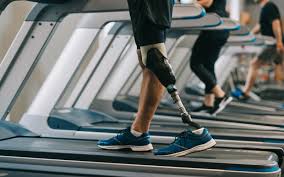
Breaking News
 Christmas Truce of 1914, World War I - For Sharing, For Peace
Christmas Truce of 1914, World War I - For Sharing, For Peace
 The Roots of Collectivist Thinking
The Roots of Collectivist Thinking
 What Would Happen if a Major Bank Collapsed Tomorrow?
What Would Happen if a Major Bank Collapsed Tomorrow?
Top Tech News
 Travel gadget promises to dry and iron your clothes – totally hands-free
Travel gadget promises to dry and iron your clothes – totally hands-free
 Perfect Aircrete, Kitchen Ingredients.
Perfect Aircrete, Kitchen Ingredients.
 Futuristic pixel-raising display lets you feel what's onscreen
Futuristic pixel-raising display lets you feel what's onscreen
 Cutting-Edge Facility Generates Pure Water and Hydrogen Fuel from Seawater for Mere Pennies
Cutting-Edge Facility Generates Pure Water and Hydrogen Fuel from Seawater for Mere Pennies
 This tiny dev board is packed with features for ambitious makers
This tiny dev board is packed with features for ambitious makers
 Scientists Discover Gel to Regrow Tooth Enamel
Scientists Discover Gel to Regrow Tooth Enamel
 Vitamin C and Dandelion Root Killing Cancer Cells -- as Former CDC Director Calls for COVID-19...
Vitamin C and Dandelion Root Killing Cancer Cells -- as Former CDC Director Calls for COVID-19...
 Galactic Brain: US firm plans space-based data centers, power grid to challenge China
Galactic Brain: US firm plans space-based data centers, power grid to challenge China
 A microbial cleanup for glyphosate just earned a patent. Here's why that matters
A microbial cleanup for glyphosate just earned a patent. Here's why that matters
 Japan Breaks Internet Speed Record with 5 Million Times Faster Data Transfer
Japan Breaks Internet Speed Record with 5 Million Times Faster Data Transfer
These New Bionic Legs Allow Amputees to Feel and Use Prosthetic as If It Were Their Real Leg

The amputees were able to climb over various obstacles without having to look thanks to sensory feedback from the prosthetic leg that is delivered to nerves in the leg's stump.
Djurica Resanovic lost his leg in a motorbike accident several years ago which resulted in amputation above the knee. Thanks to novel neuroprosthetic leg technology, Resanovic was successfully connected to his bionic leg during clinical trials in Belgrade, Serbia.
"After all of these years, I could feel my leg and my foot again, as if it were my own leg," reports Resanovic about the bionic leg prototype. "It was very interesting. You don't need to concentrate to walk, you can just look forward and step. You don't need to look at where your leg is to avoid falling."
Scientists from a European consortium led by Swiss Institutions, ETH Zurich and EPFL spin-off SensArs Neuroprosthetics, with clinical trials in collaboration with institutions in Belgrade, Serbia, successfully characterized and implemented bionic leg technology with three amputees. The results appear in this week's issue of Science Translational Medicine.
"We showed that less mental effort is needed to control the bionic leg because the amputee feels as though their prosthetic limb belongs to their own body," explains Stanisa Raspopovic, the ETH Zurich professor who led the study.

 The State's Last Stand
The State's Last Stand


